Common yellow salsify, Tragopogon dubius (also known as oyster plant and goatsbeard) is seen as a weed in most in North America. It might surprise you that the plants are also coveted by chefs and cultivated for their edible taproot. Today we'll unearth some of the history, cover basic identification, different edible parts of the plant, and how they can be cooked.
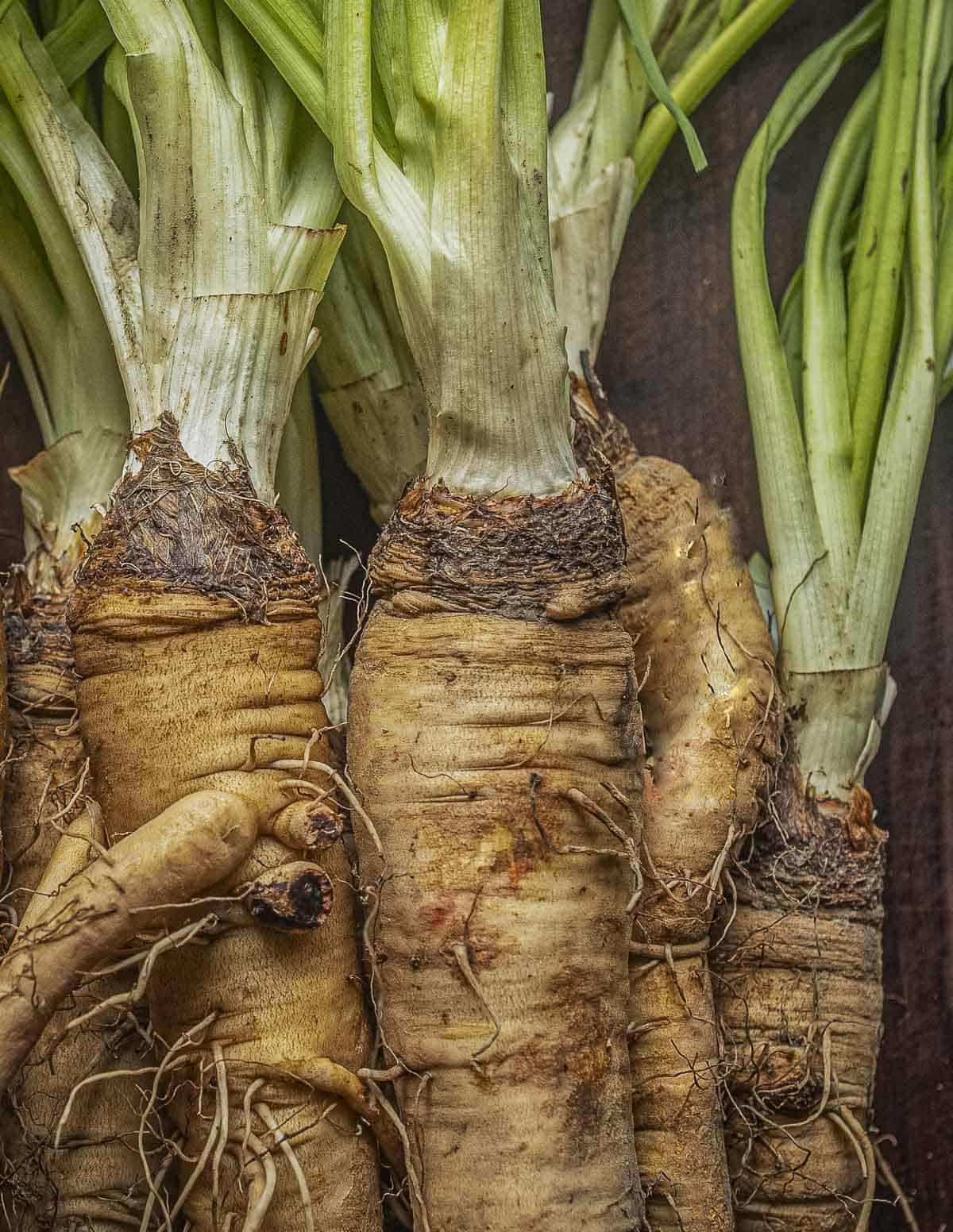
What is Salsify?
Native to Europe and Eurasia and a common weed of yards and gardens in North America, Yellow salsify (Tragopogon dubius) is one of a number of plants in the genus Tragopogon that make large, fleshy, and sometimes branching taproots.
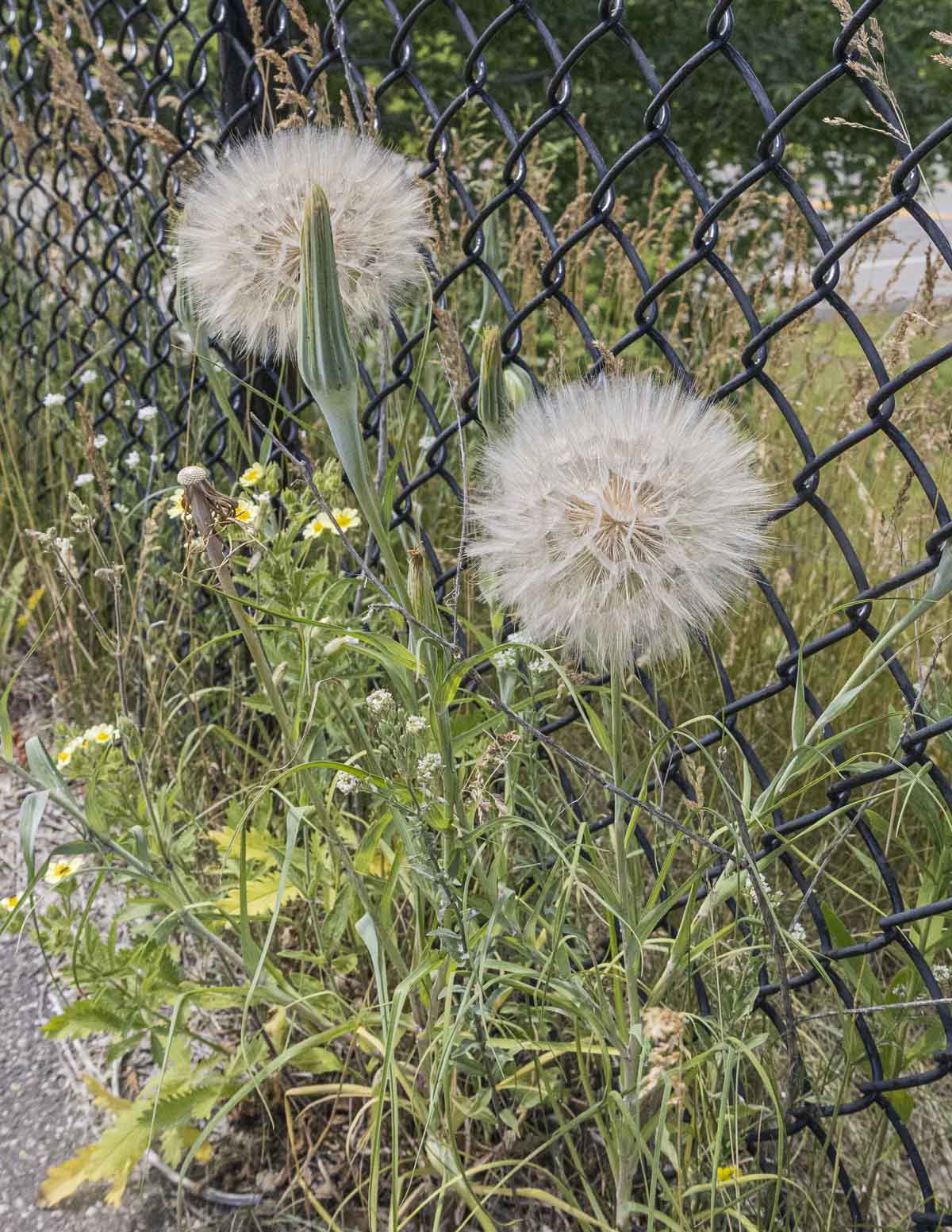
While the plant can be weedy where it's been introduced in North America, it's easy to control by removing the roots. In a perfect example of the dichotomy of many wild foods, it's a weed that's also a luxury ingredient.
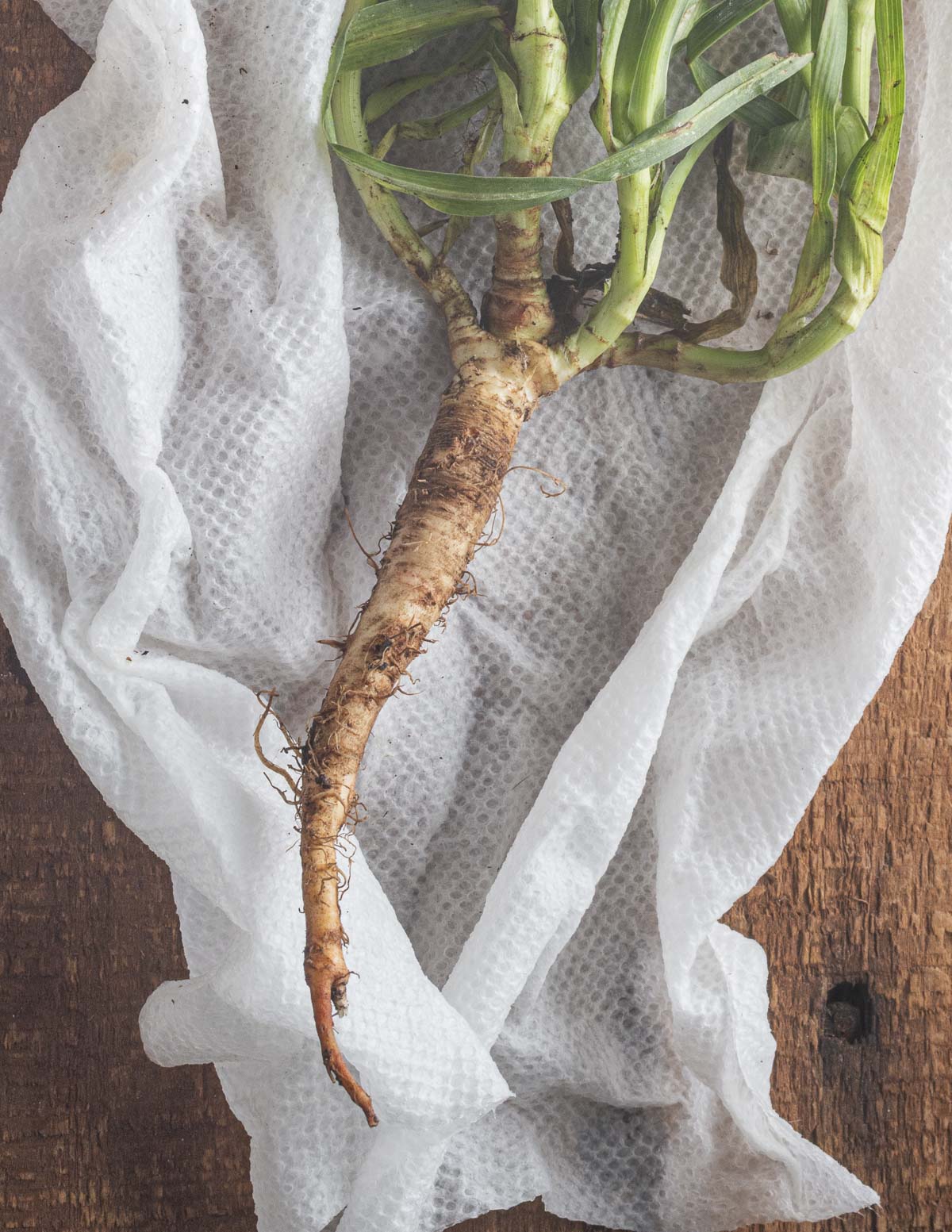
Below is an infographic I compiled from my books-recipes for salsify are in nearly every "high-end" cook book I have, including Alain Ducasse and Thomas Keller. Many of the recipes conflate black salsify or scorzanera with yellow salsify. Both roots are good but black salsify is held in a higher esteem.
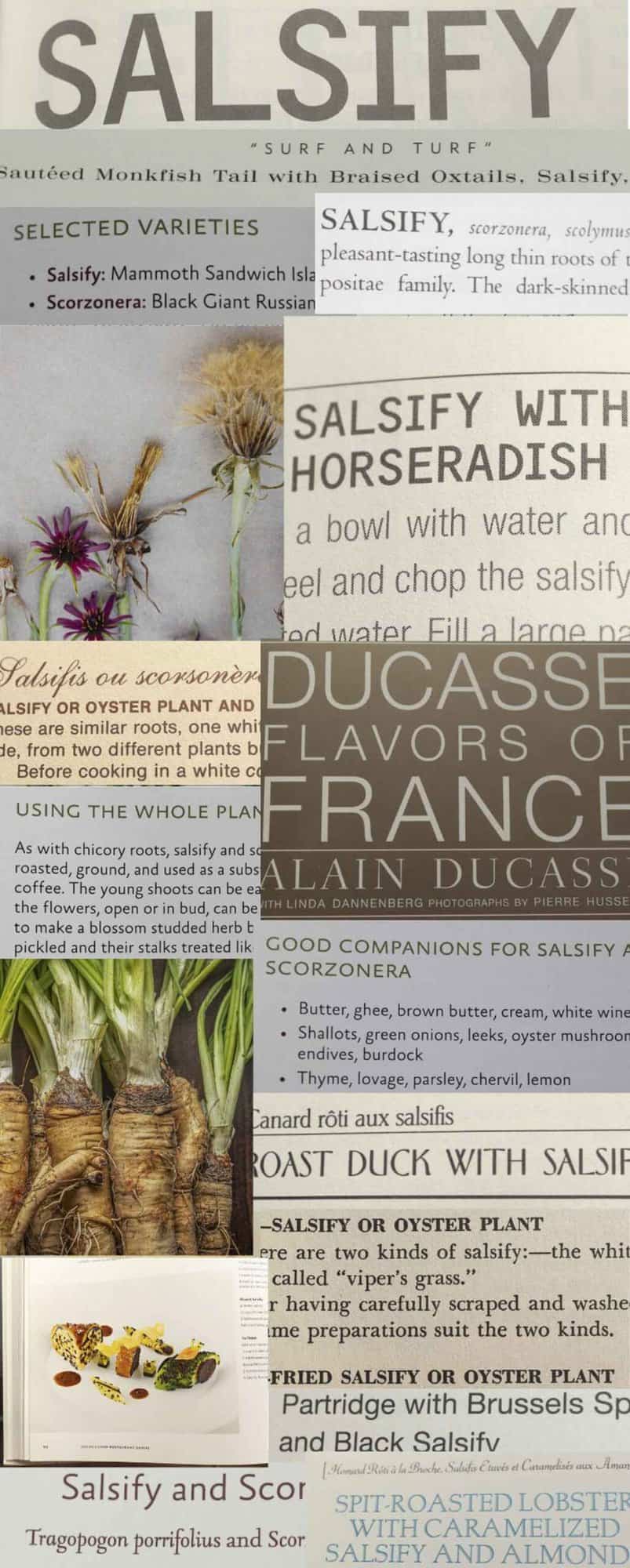
Salsify Identification
They appear in the spring as a rosette of thin, u-shaped shiny leaves that are easily mistaken for grasses and sedges. Salsify grows in moist shady soil, and I often see it in forest edges and meadows. But, like most weeds it also likes disturbed areas and will grow in many places.
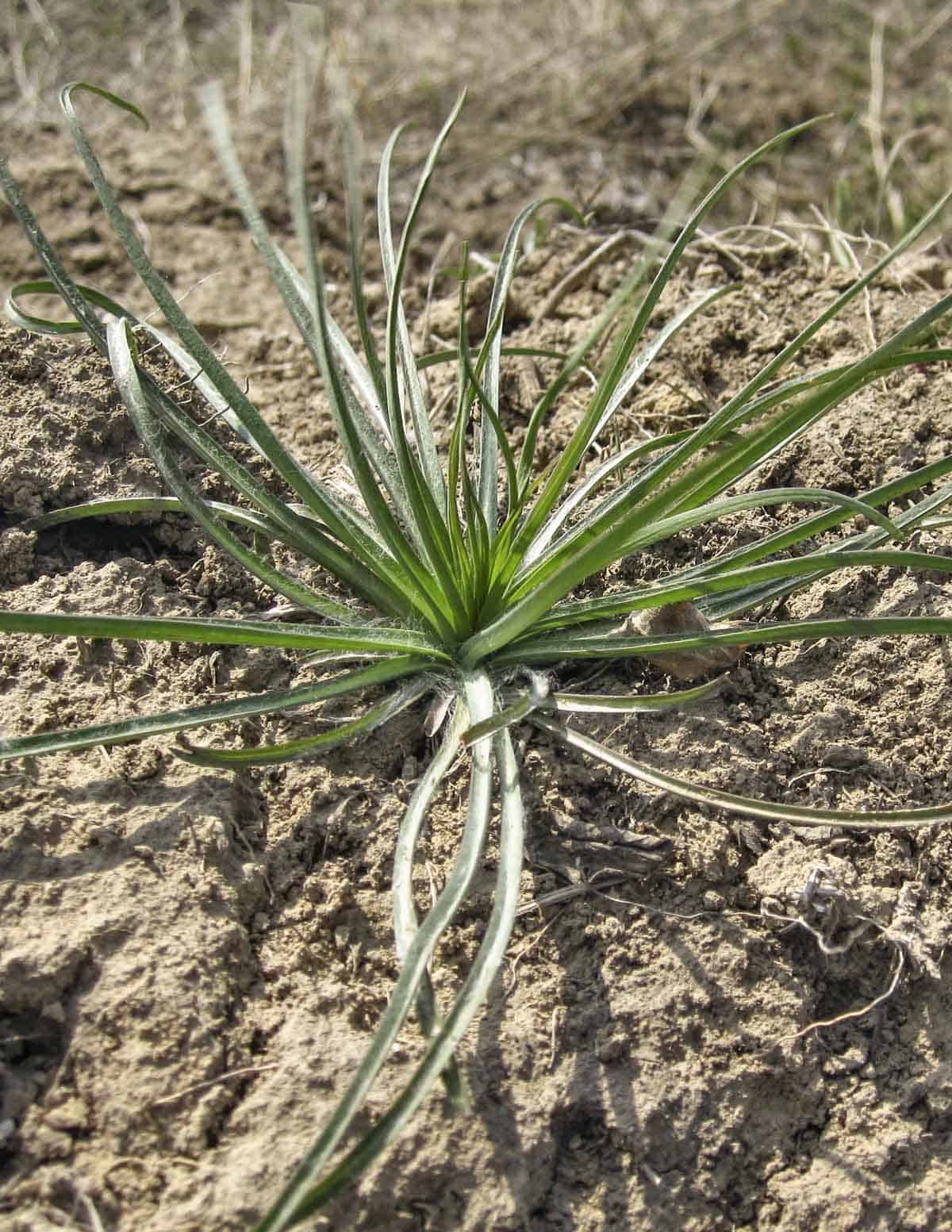
As the growing season progresses, second-year plants will produce a hollow flower stalk with multiple, tapering flower buds. As you can see in the image below, they're often covered with a light bloom when young that can make the color appear as a subtle blue-green.
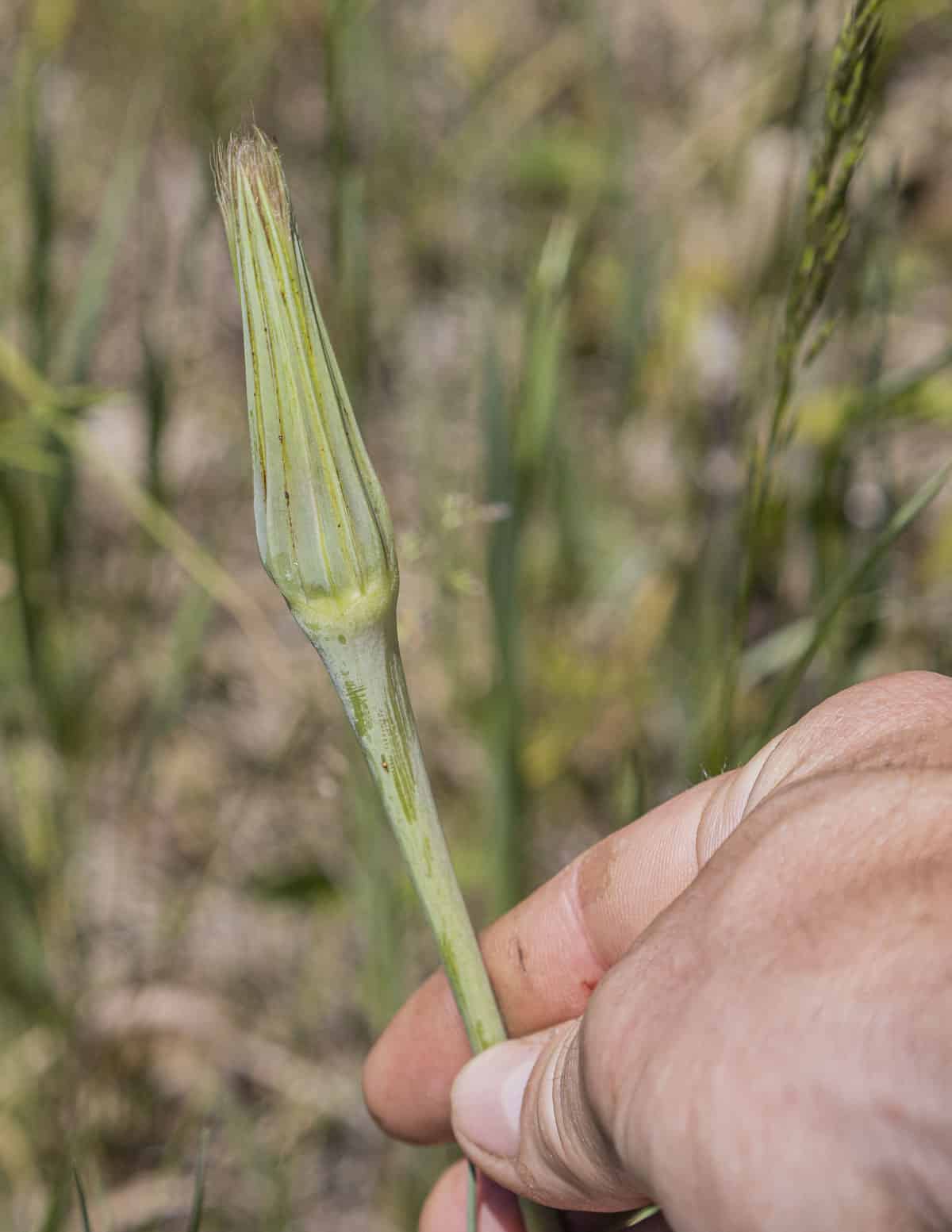
The flower buds eventually bloom into yellow composite flowers that slightly resemble dandelions. Similar to carrots, the plants are biennials and won't flower until the second year of growth.
One good way to tell the difference between dandelion and salsify flowers is that yellow salsify flower heads have long green bracts that extend beyond the ray flowers as you can see below.
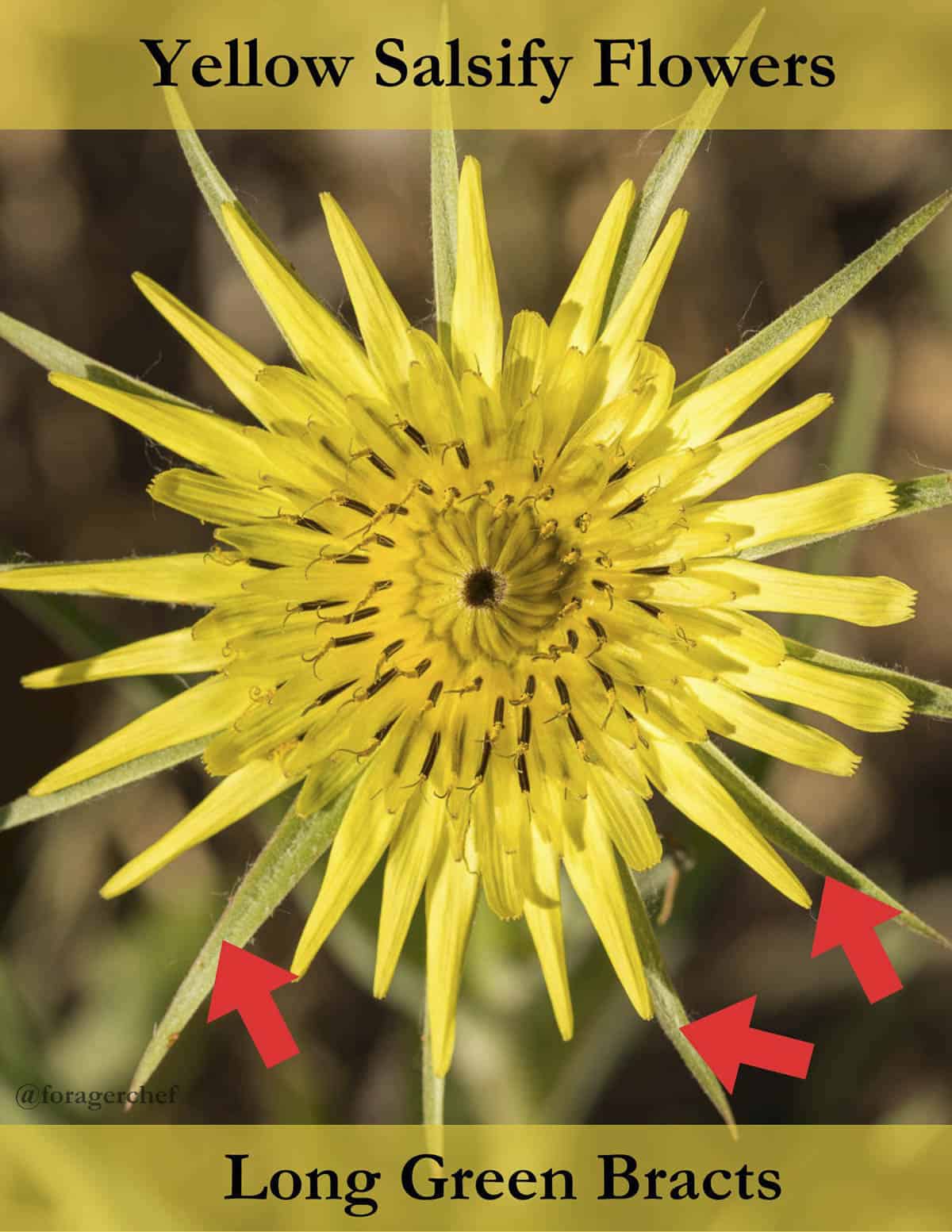
That said, there's two similar species of Tragopogon you might see in North America have slightly different flowers. Tragopogon pratensis (meadow salsify) has bracts that are shorter than the ray leaves. Tragopogon porrifolius (shown in the image below) has purple ray flower with longer bracts similar to Tragopogon. dubius. For the record, all of the species are edible.
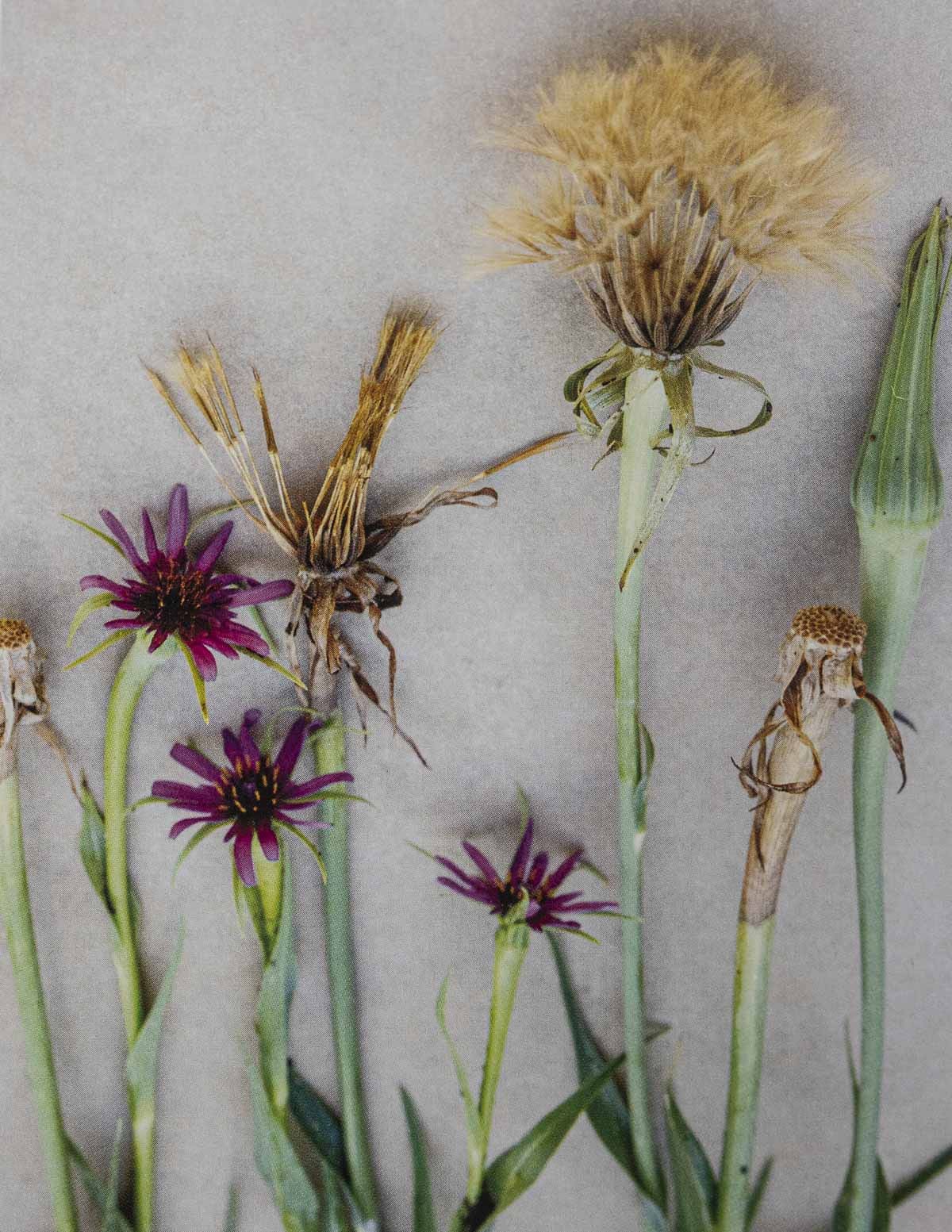
Once the flowers are ready to go to seed they'll close, reopening as a seed head. At this point, yellow salsify plants look like dandelions as both plants make a round cluster of white, fluffy seeds. Salsify seed heads are noticeably larger than dandelions, and the plants are usually taller in my experience.
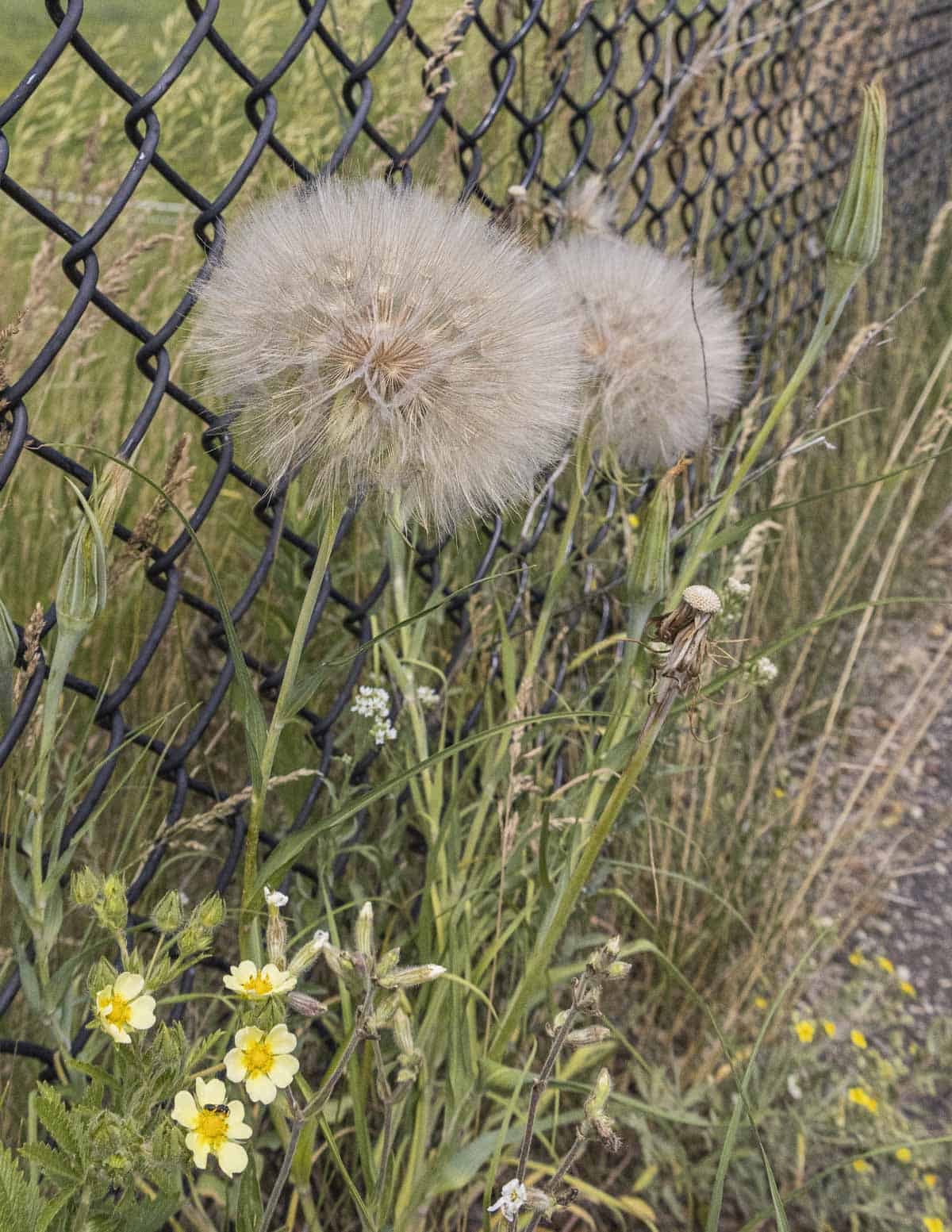
Each seed has a small parachute attached to it which helps the seeds catch the air and get dispersed by the wind. If you want to grow salsify, you can easily collect seeds to plant yourself when you notice the large dandelion-like seed heads.
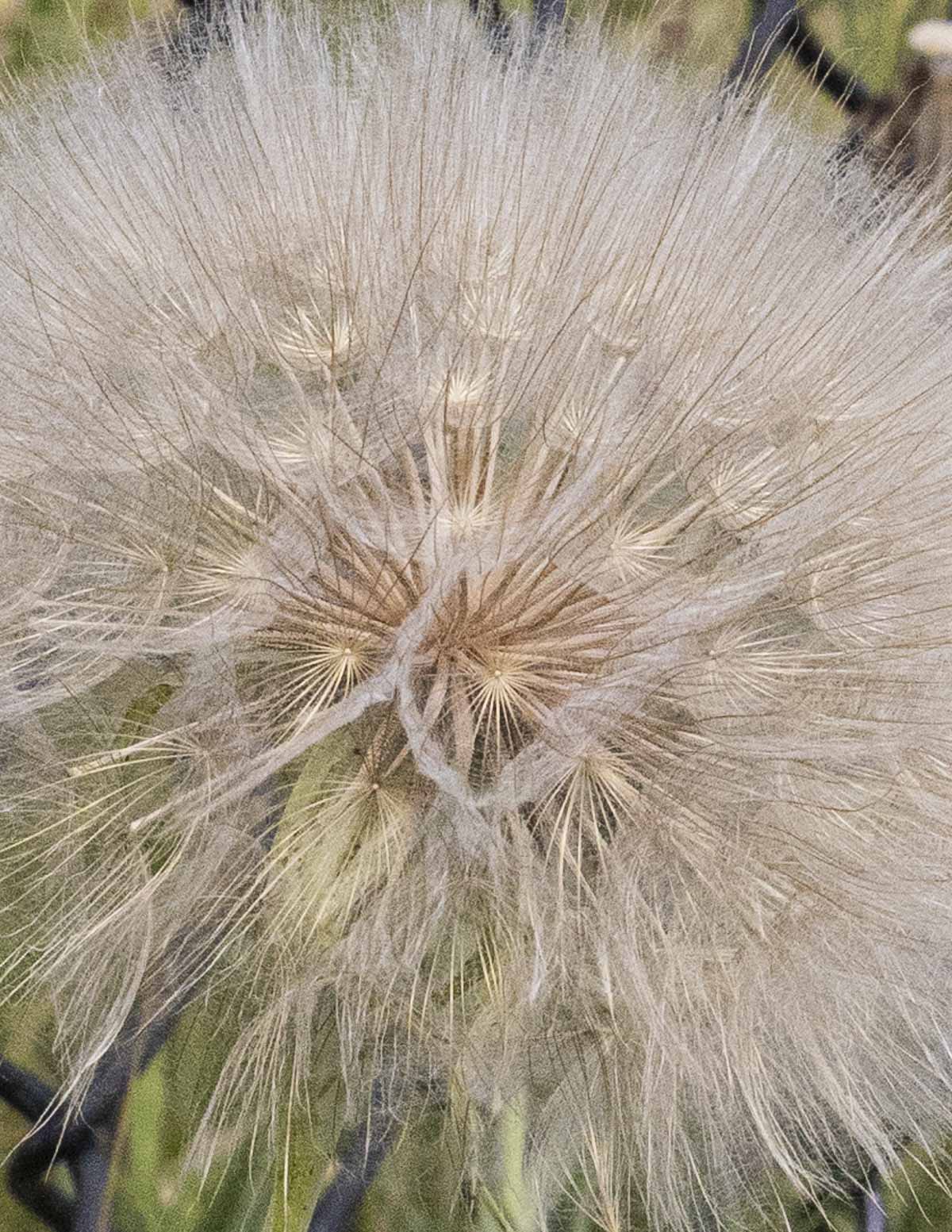
Another characteristic that's useful for identification is that the green parts, as well as the roots of the plant exude a sticky white latex when cut. You can see the latex forming on a peeled root below. Damaged roots can also stain pink over time.

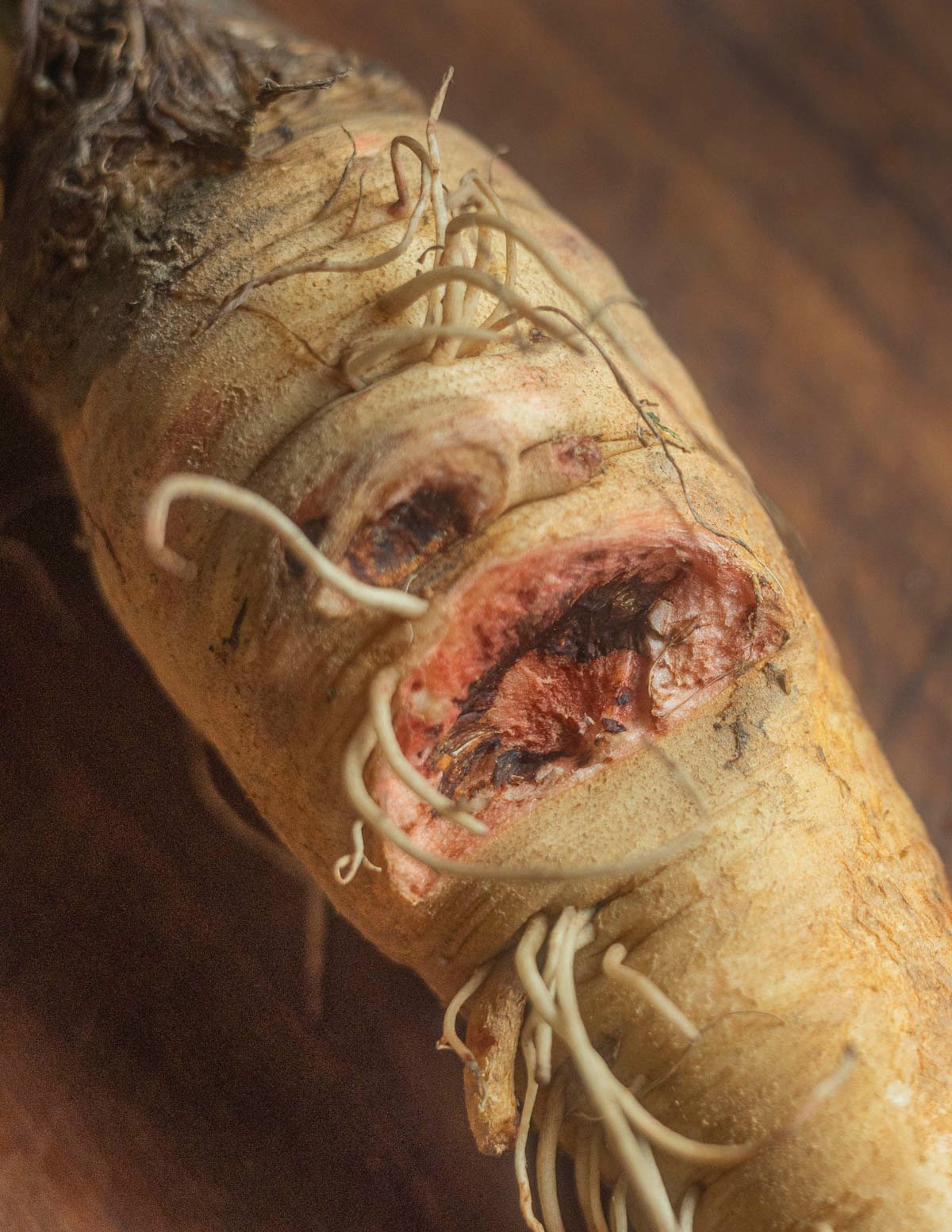
Edible Parts
The whole plant is edible but some parts are better than others. The unripe seeds, flower stalk / shoot, crowns, and roots can be harvested, with the roots being the most prized.
Crowns
Foragers will want to look for the crowns, or clusters of tender green leaves that sprout from the plant in the spring. The whole clusters of greens can be cooked as a vegetable similar to dandelion crowns. I like to blanch them in salted water for a minute before cooking in a pan with garlic and oil.
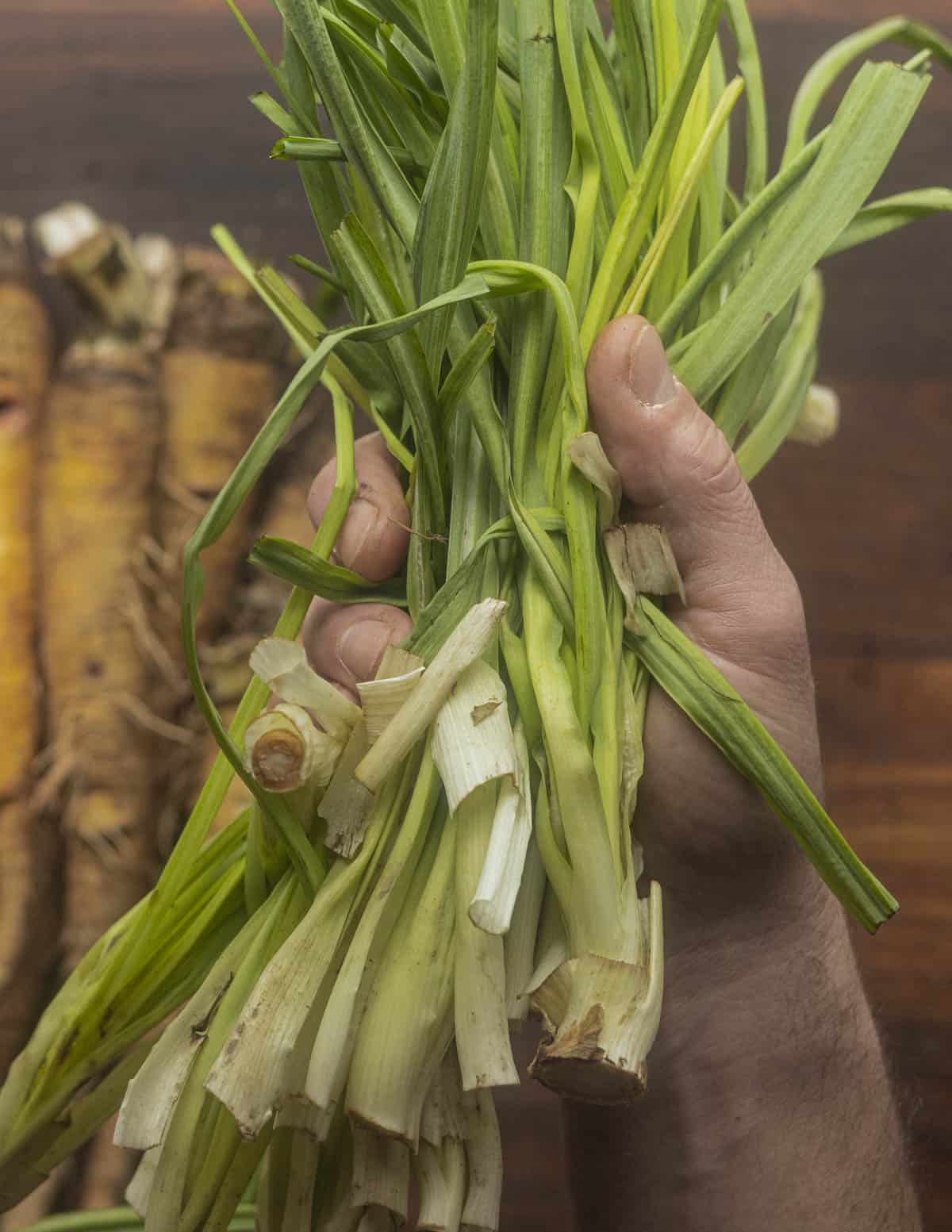
Sam Thayer also writes that the shoots can be peeled and cooked as a vegetable, which I have yet to try.
Flower Buds
The unripe flower buds can be cooked as a small vegetable but can be tricky to get in the right stage in my experience. The flowers open early in the day and close at night, making it difficult to see which flowers have developed seeds, which makes them tough. The best way I've found to make sure they're tender is to just try one. If the seeds have begun to develop (as shown below) they'll be too old to eat.
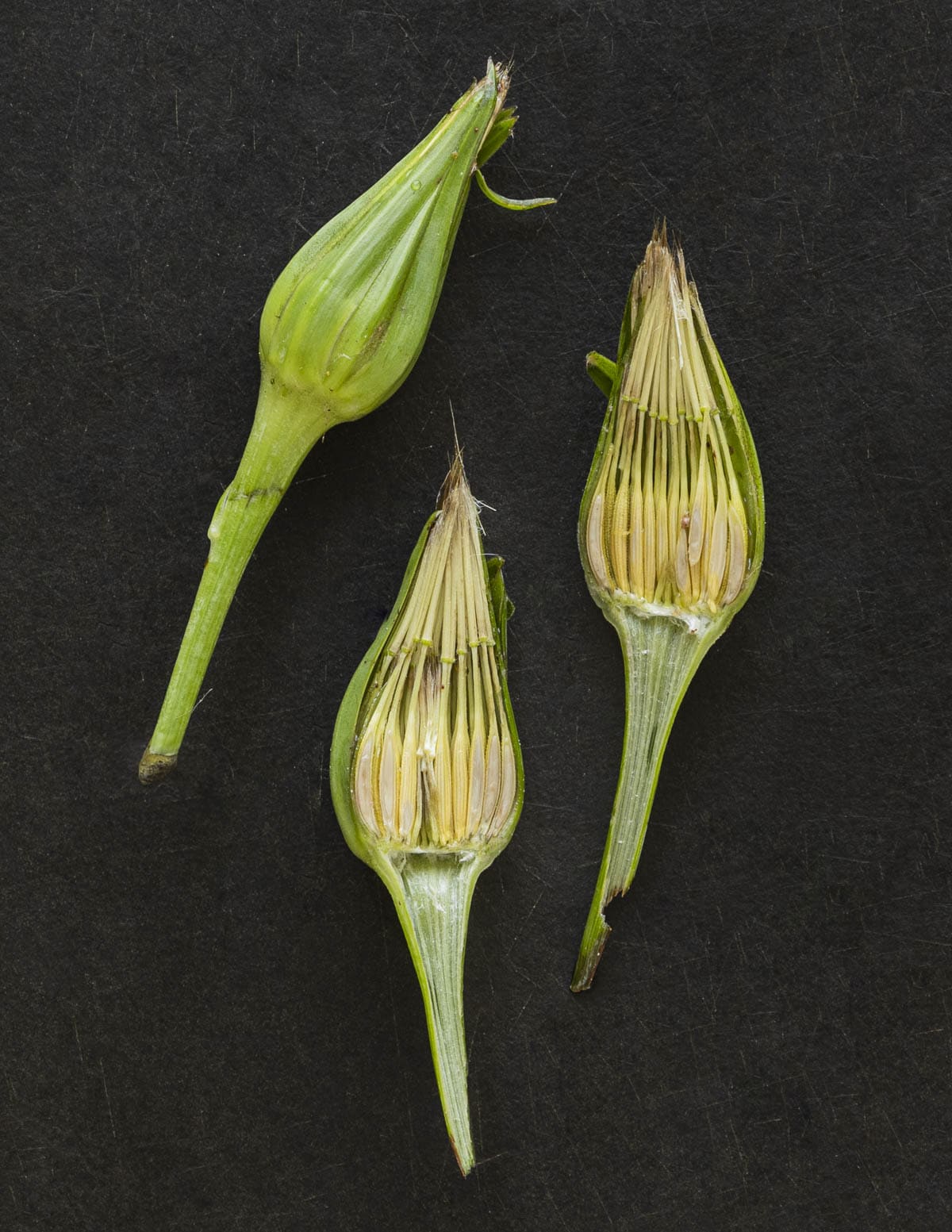
Roots
Salsify roots are the most prized part of the plant, and if you get them at the right time you can harvest both the roots and the attached crowns. If you're harvesting wild plants, keep in mind that digging the roots will kill the plants and they will not return.
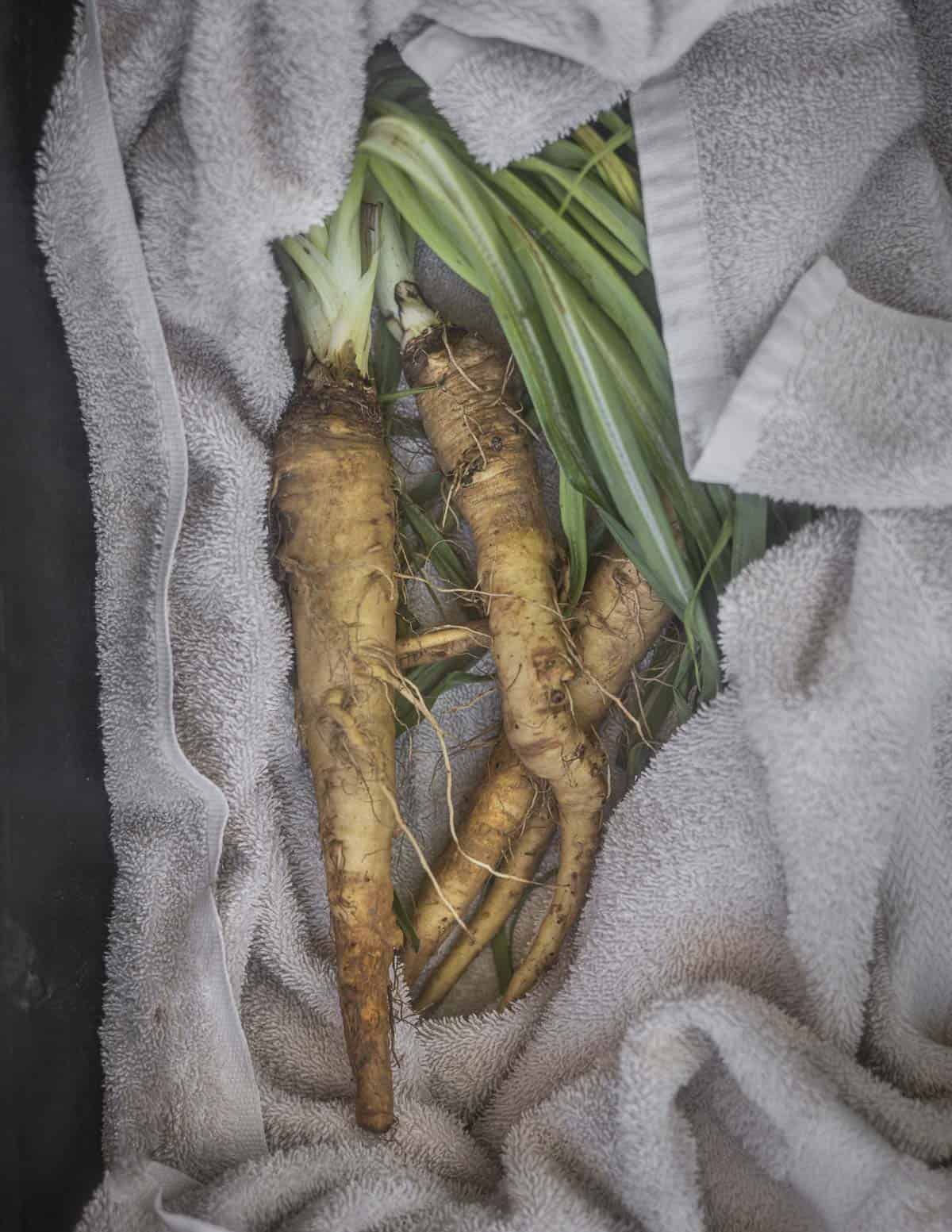
Wild plants growing in soft, diggable soil will have the longest roots which are the best for cooking. Plants growing in rocky soil can be small, or branch off into multiple taproots that are more difficult to cook.
Look Alikes
Plants without flowers can be confused with sedges, grasses and spiderwort, there's a few plants that they can resemble, the only poisonous one I know of is death camas (Toxicoscordion venenosum), but it has a bulb, not a root, and doesn't produce milky sap. Here's a few other tips:
- Make sure the plants produce milky white latex when cut.
- Spiderwort plants have slimy sap and the stems are solid instead of hollow.
- Edible wild alliums and onions can resemble the plants, but they don't produce latex and smell of onions.
How to Cook Salsify Roots
The roots are trickier to cook than something like a carrot or parsnip, but worth taking the time to learn about. There's a number of ways to cook the roots, but the most important thing to know is that, like burdock, they quickly discolor and need to be held in acidulated water after peeling. First you'll remove the green crowns and leaves from the roots, then peel them.
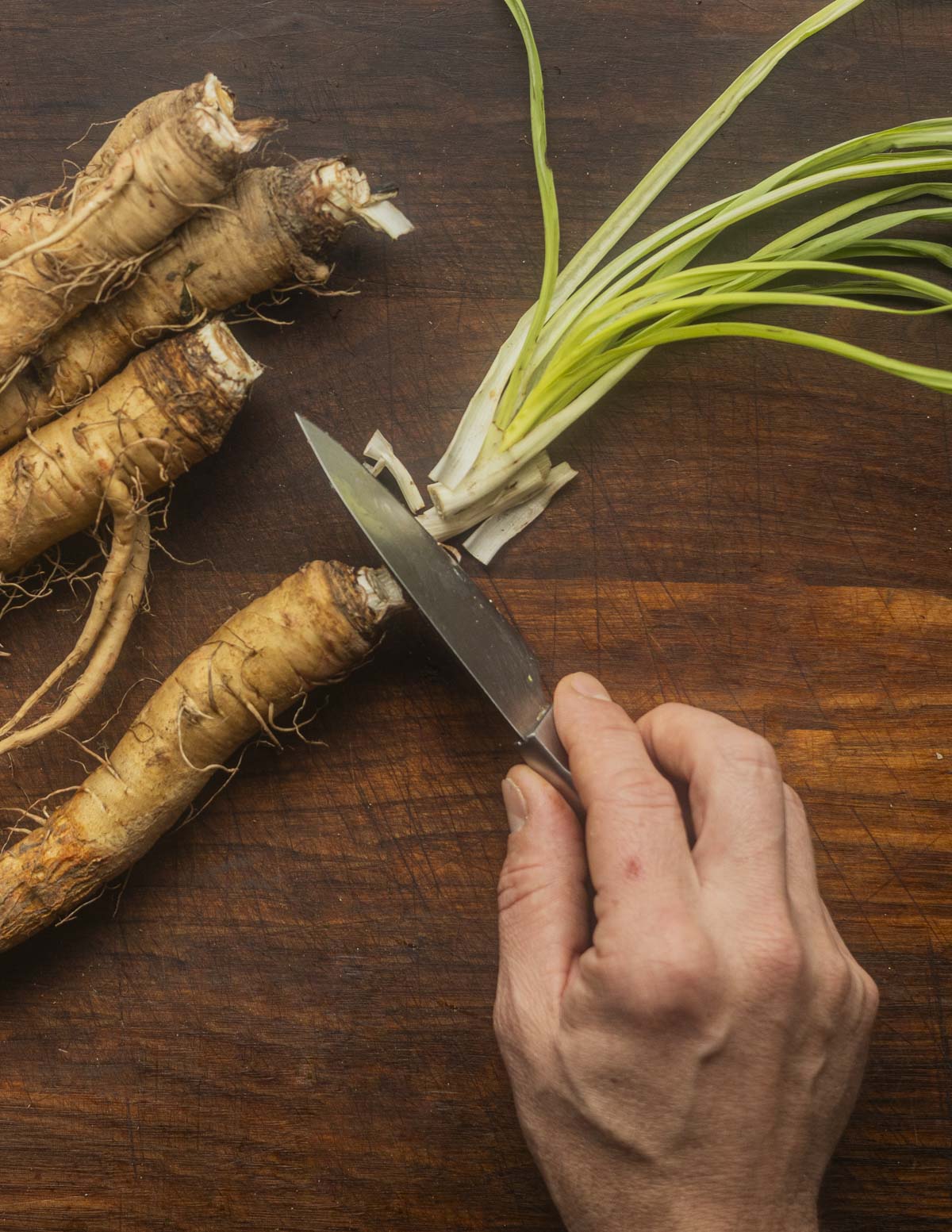
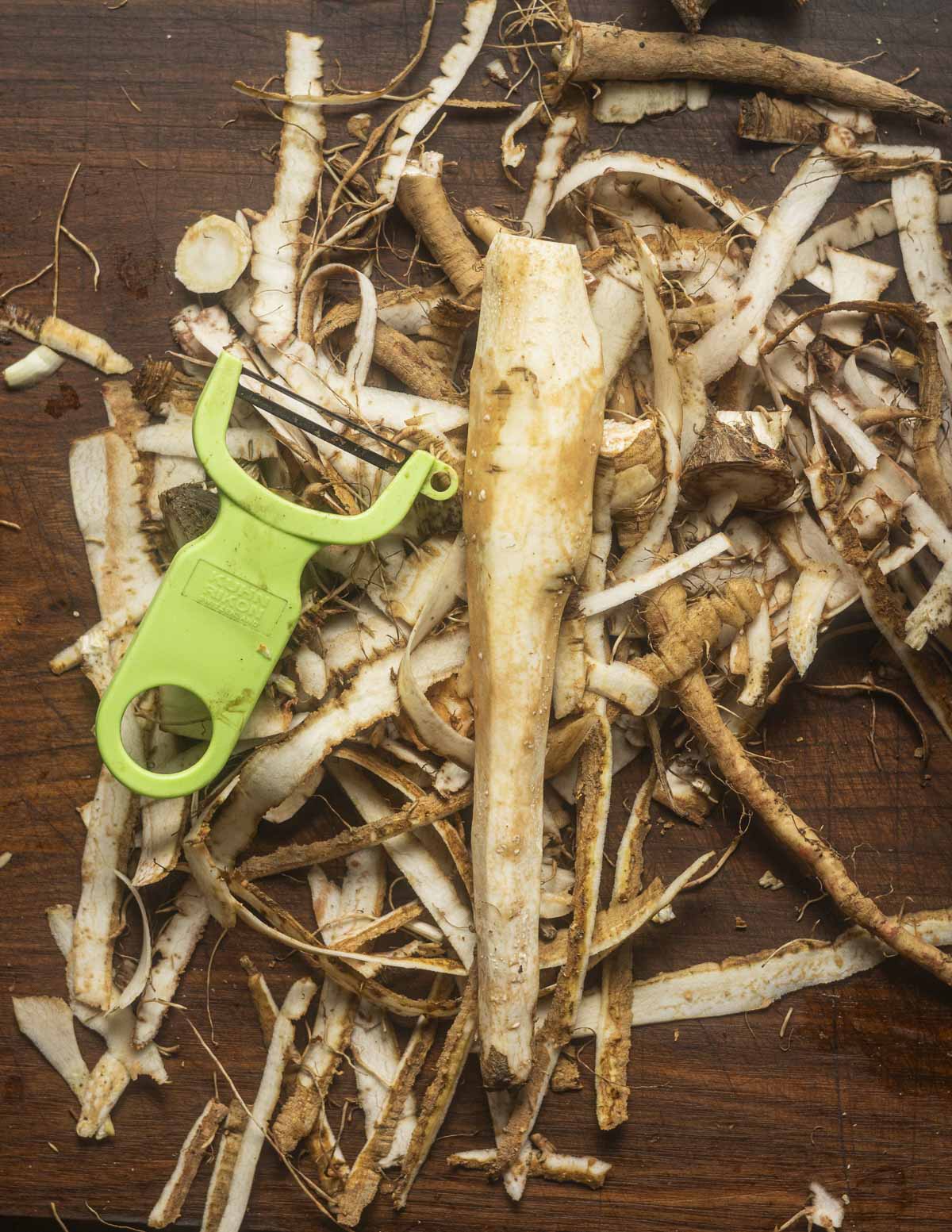
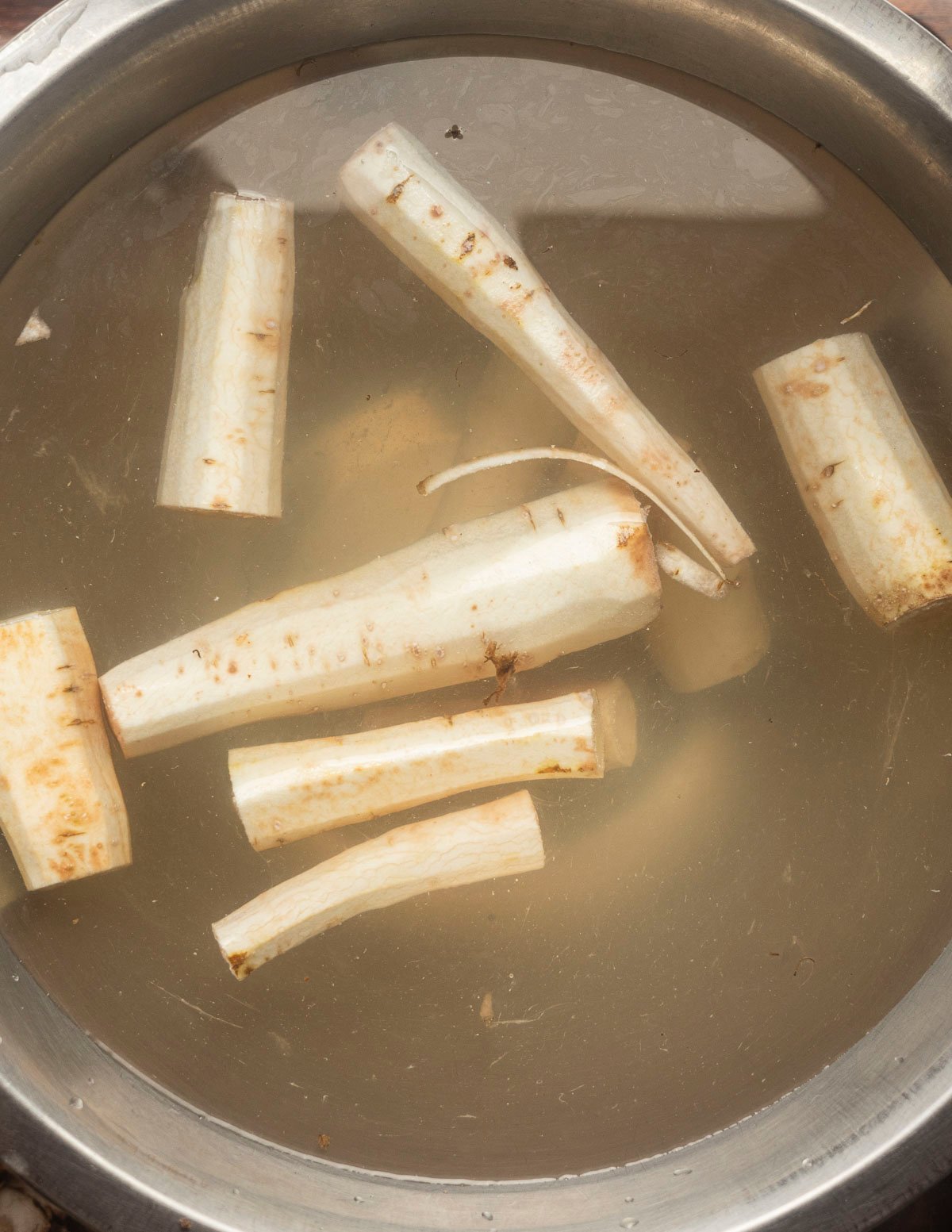
Once the roots are peeled a classic French salsify recipe is to simmer the roots in a "white court bouillon" which is just water, salt, a dash of vinegar and a spoonful of flour. The flour keeps the roots white while they cook.
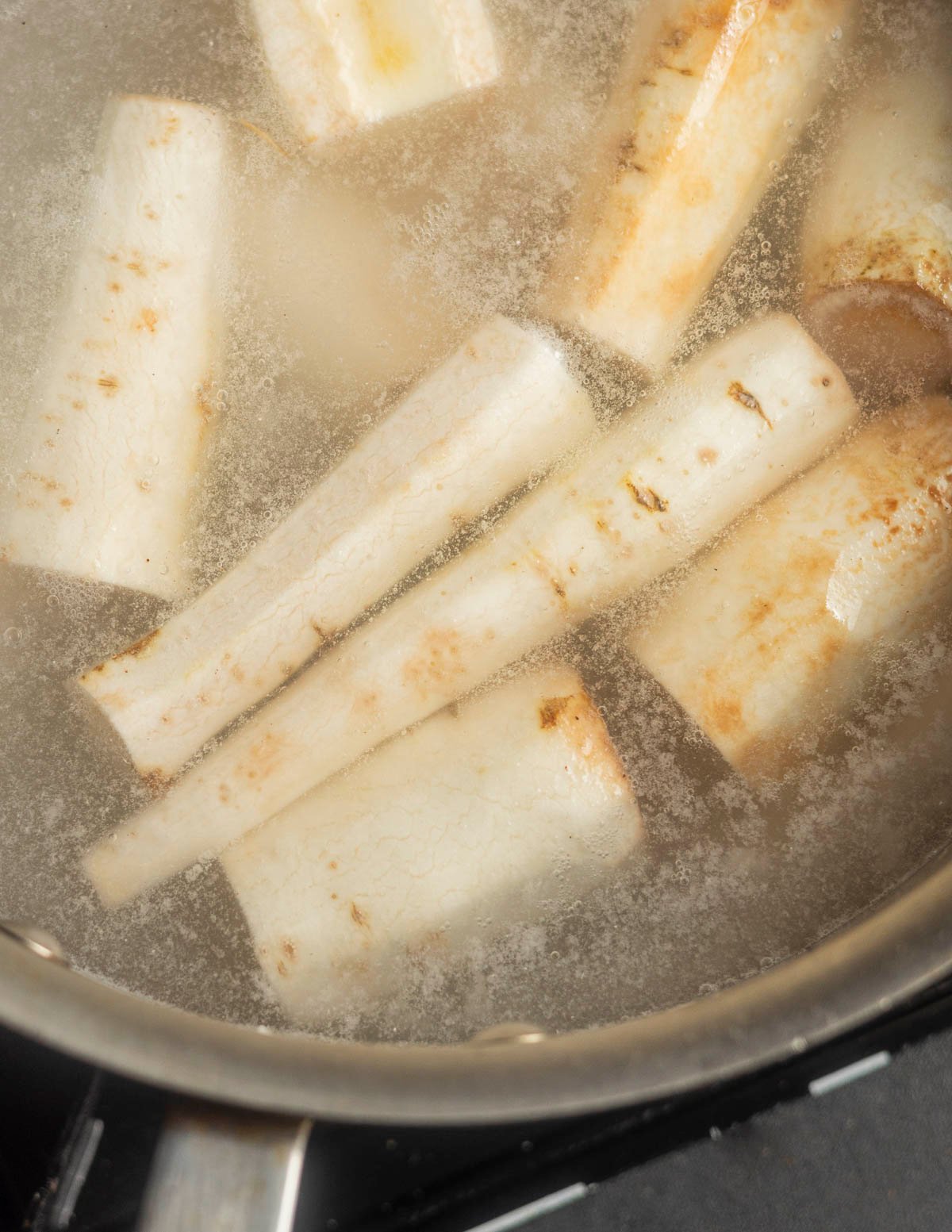
Once the roots are simmered they can be held for a week or two in their cooking liquid. The par-cooked root segments can be sliced into coins or bite-sized pieces, and simply browned to taste their flavor.
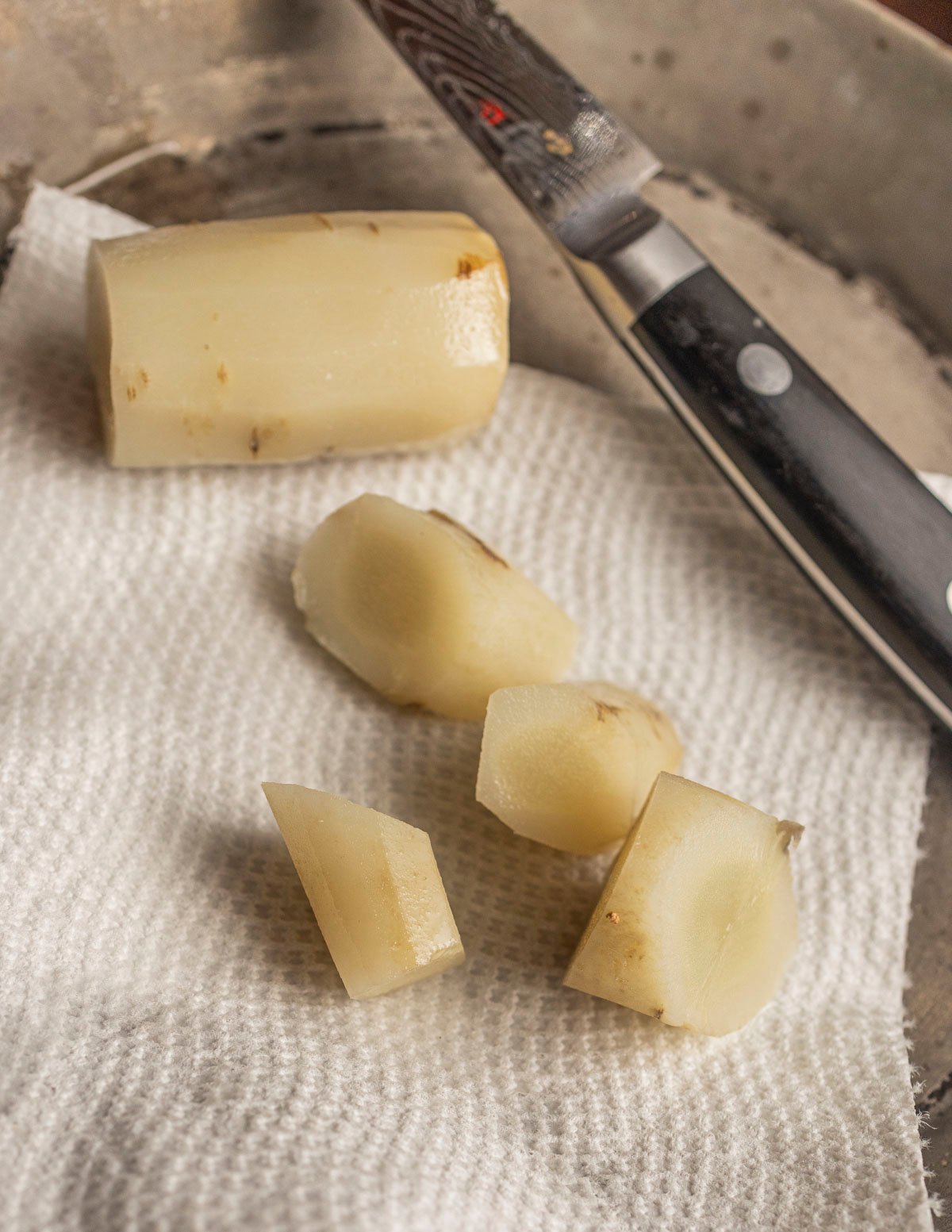
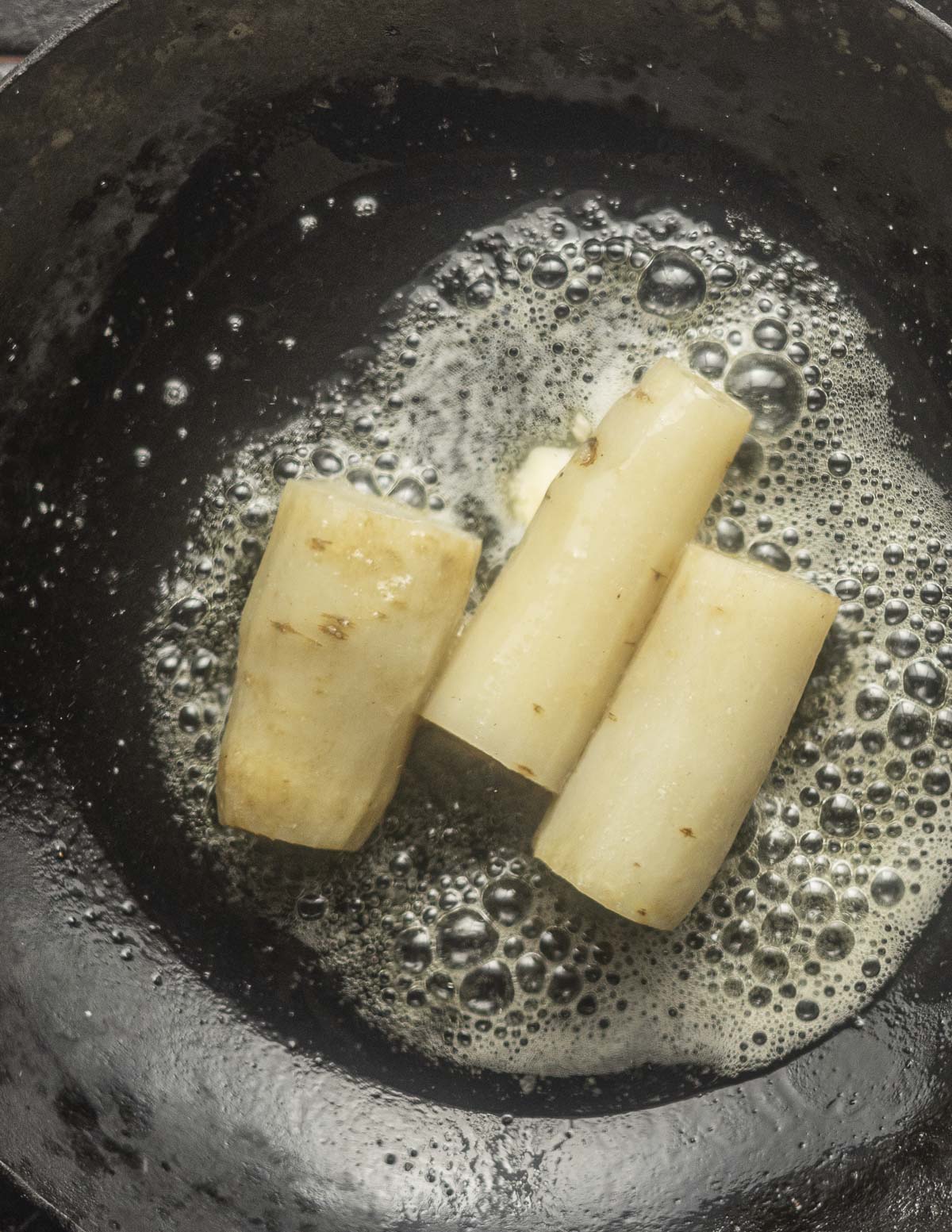
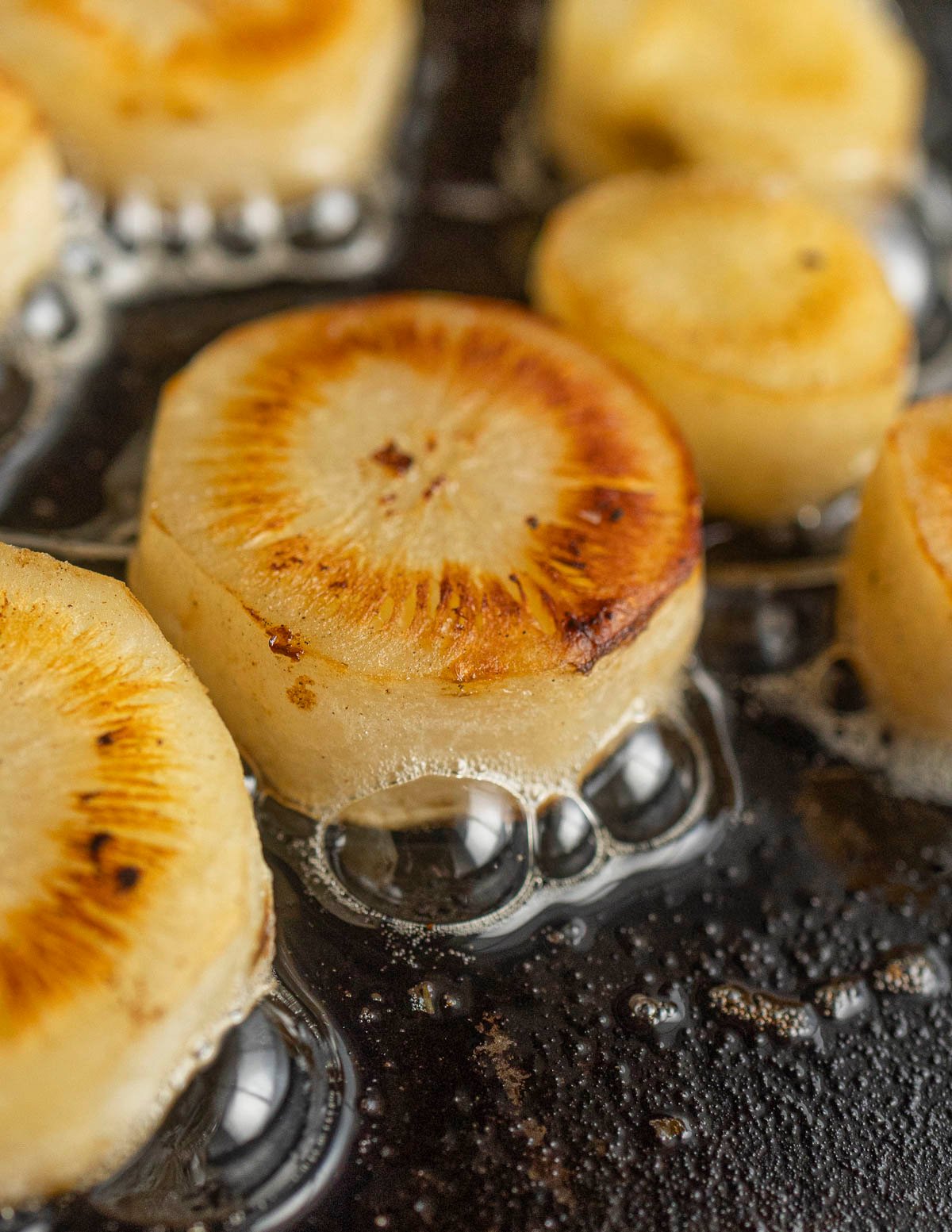
A Few Salsify Recipes
The cooked roots are incredibly delicious. Salsify tastes like artichoke with the texture of a tender carrot. Once you have the basic recipe down for par-cooking the roots there's all kinds of things you can do with them.
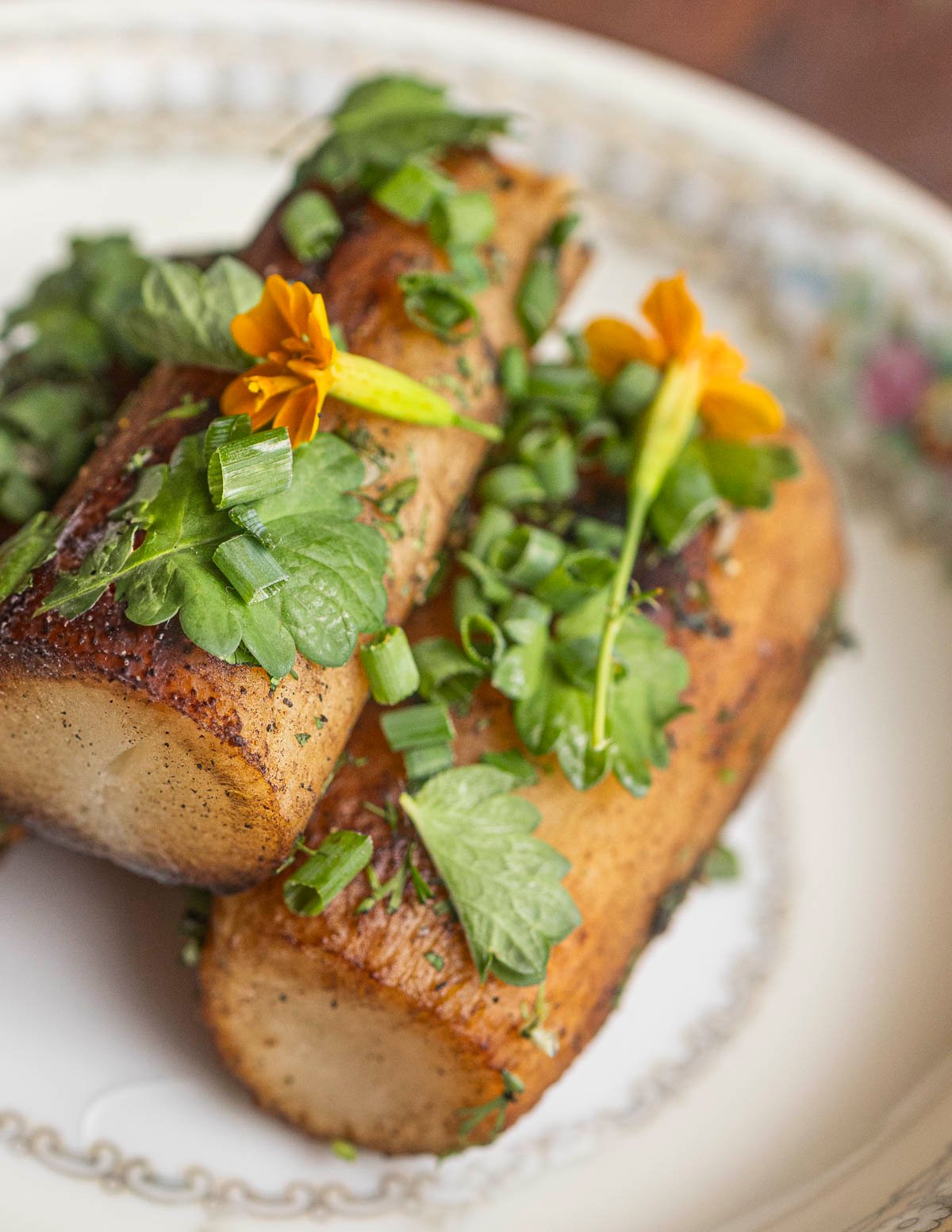
My old French and Italian cook books are a wealth of salsify root recipes. Here's a few classics from Paul Bocuse.
Simple Fried Salsify with Persillade
After poaching salsify roots, dry them off, fry in cooking oil or duck fat until browned and toss with minced garlic and parsley as a side dish.
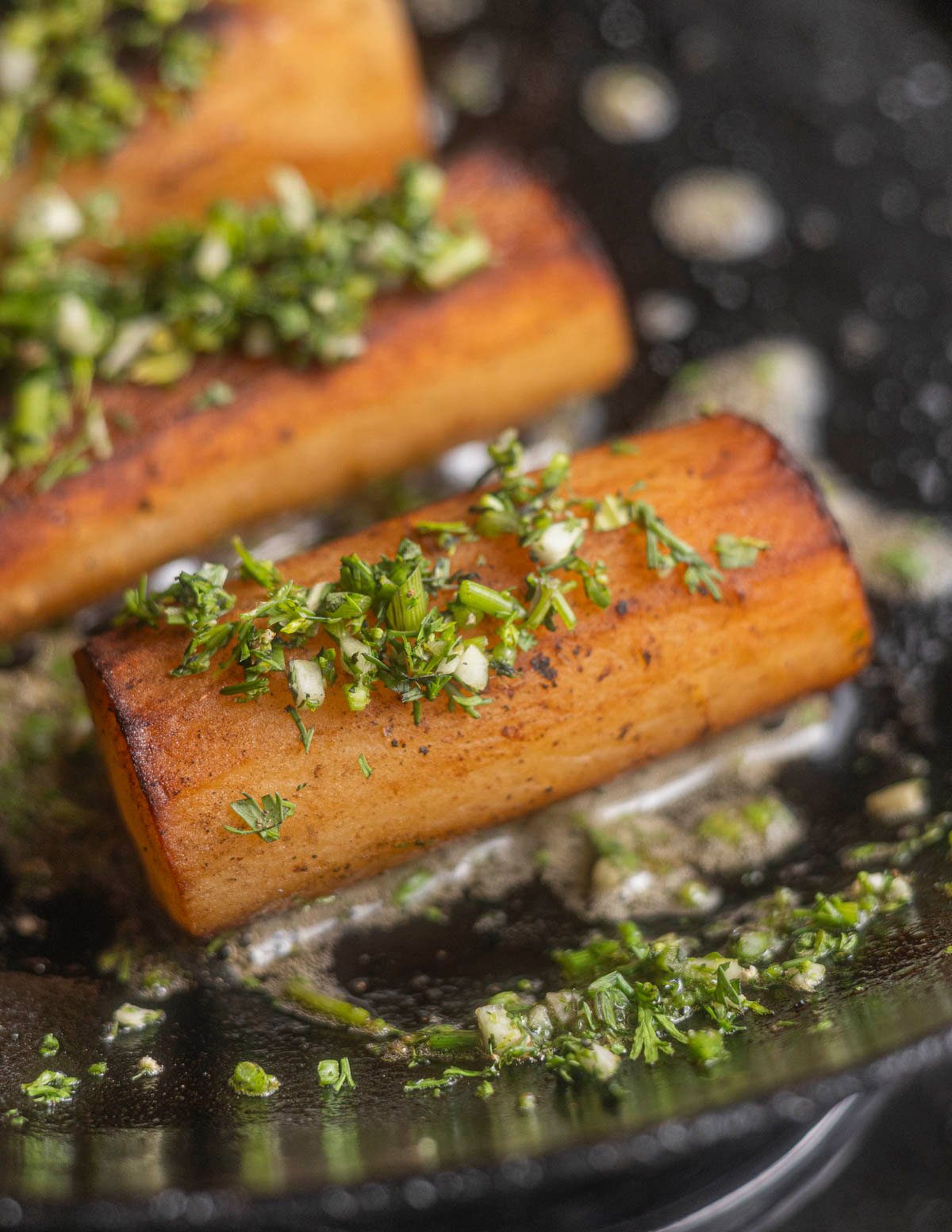
French Salsify Roots Lyonnaise
A classic from the culinary heart of France and great side dish that anyone can make. The poached roots are sliced into thick coins and fried with caramelized onions.
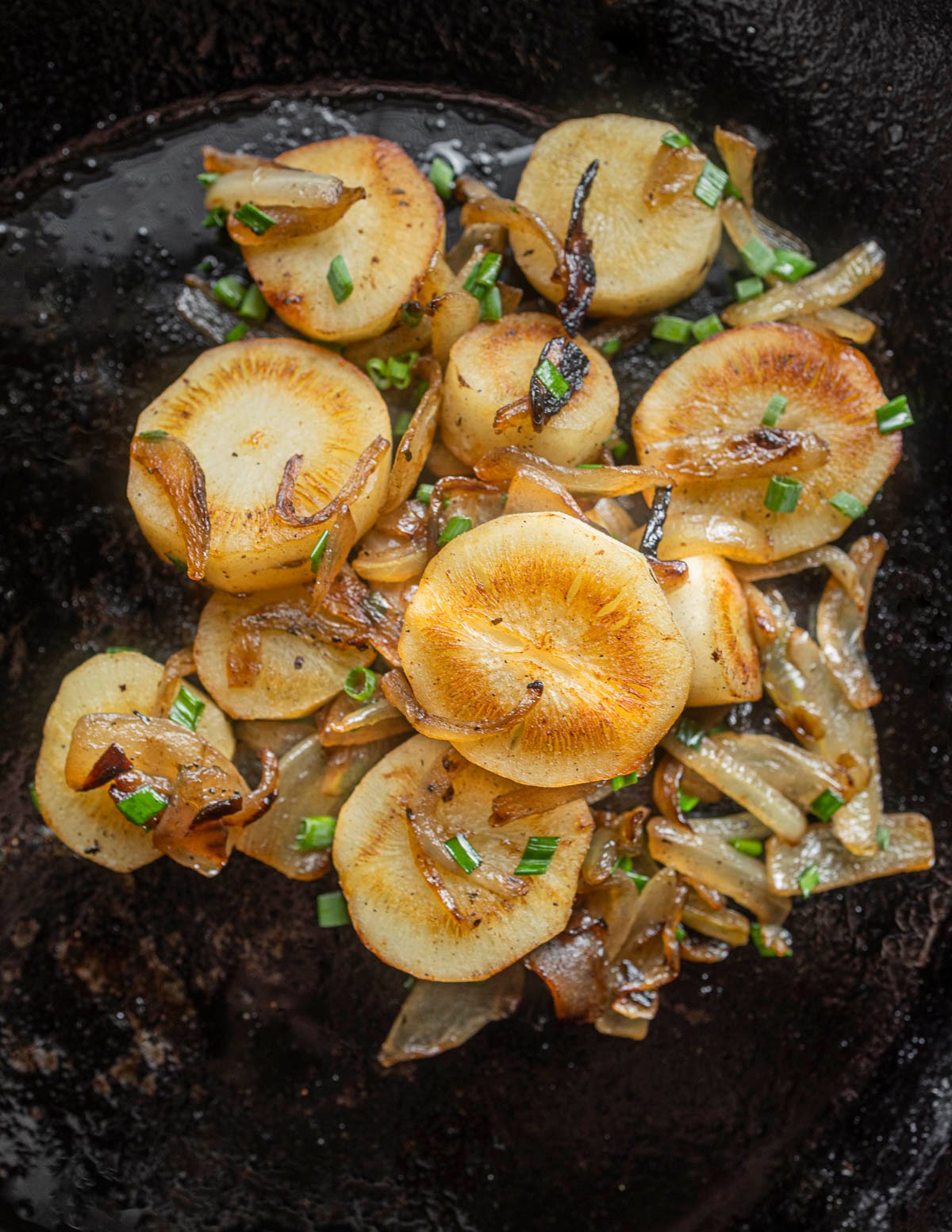
Creamed Salsify
A decadent side dish perfect for serving with fish or with roast chicken. Poached roots are cut into bite-sized pieces and simmered with cream. I like to add tarragon or basil to them at the end.

Related Posts
How to Cook Salsify Roots
Equipment
- 1 3 quart sauce pot
- 1 10 inch saute pan
Ingredients
Par Cooking the Roots
- 2 qts Lemon or vinegar water for holding the roots
- 8 oz salsify
- 6 cups water
- 1 teaspoon kosher salt
- 1 Tablespoon vinegar
- 1 Tablespoon flour
Cooking and Finishing (optional)
- 1 teaspoon minced garlic
- Tablespoon Minced parsley
Instructions
Par Cooking
- Trim the green tops, peel the roots and hold them in acidulated water. Cut the roots into 2-3 inch pieces.
- Mix the water, flour, salt and vinegar in a 3 quart pot with high sides, whisk well to dissolve the flour.
- Add the peeled roots, bring to a simmer and cook for 45 minutes at the lowest heat, or until very tender when pierced with a knife.
- From here the salsify can be stored in the cooking liquid for up to two weeks in the refrigerator.
Finishing and serving
- Remove the salsify and drain on a paper towel. Cut the roots into coins or leave in 2-3 inch pieces.
- Saute the roots in a little cooking oil until browned on all sides, season to taste with salt and serve.
- Tossing the finished roots with minced garlic and parsley at the end is a nice touch, but they're also fine by themselves.


James
Hey Alan,
You've posted this at the perfect time for harvesting season here in Australia. Found some beautiful plants on my walk home the other day, and cooked them up for the first time. I've been wanting to try salsify for years, but never would have figured out the par-cooking technique on my own, so I really appreciated having this recipe, which gave me the confidence to try it. As always, brilliant work – never missing an important detail!
Alan Bergo
Thanks James, cheers from way across the pond!
Christine
If you were to grow salsify, would it keep like other root vegetables?
Alan Bergo
Possibly but I haven’t tried it so I can’t recommend that. I wouldn’t personally.
Bryanna
Quick question. How advisable is it to peel the roots? I like to prepare things like potatoes, parsnips, and carrots with their skin, but am not sure if the skin on these would be too tough to do so.
Alan Bergo
It’s possible you could heavily scrub them like carrots. Haven’t tried it personally.
Arena Heidi
I eat them with their skins and don't peel them. The roots can be too skinny to peel.
Alan Bergo
True.
Laura
Please advise on when to harvest - early spring and late fall? First year plants better than second? Thank you!
Alan Bergo
Treat like a carrot. First year, fall.
Corla McGillivray
Can they be frozen after the summer step?
Thea
Instructive and mouth-watering, as ever!
julie
I'm thrilled to have found you. Your work is so thorough and helpful - I love your book too.
I look forward to finding Salsify out in the field!
Dan F
The late Charlie Trotter was big on salsify. A number of recipes in his cookbooks feature it.
LaRae
Great information and excited to try this!
Alan Bergo
Thanks